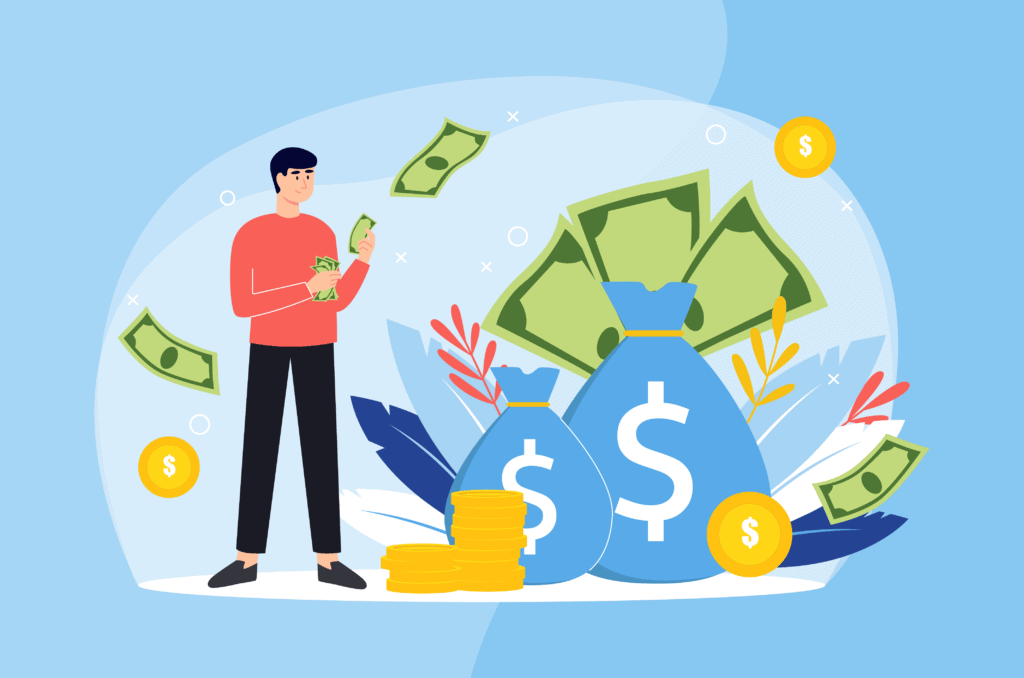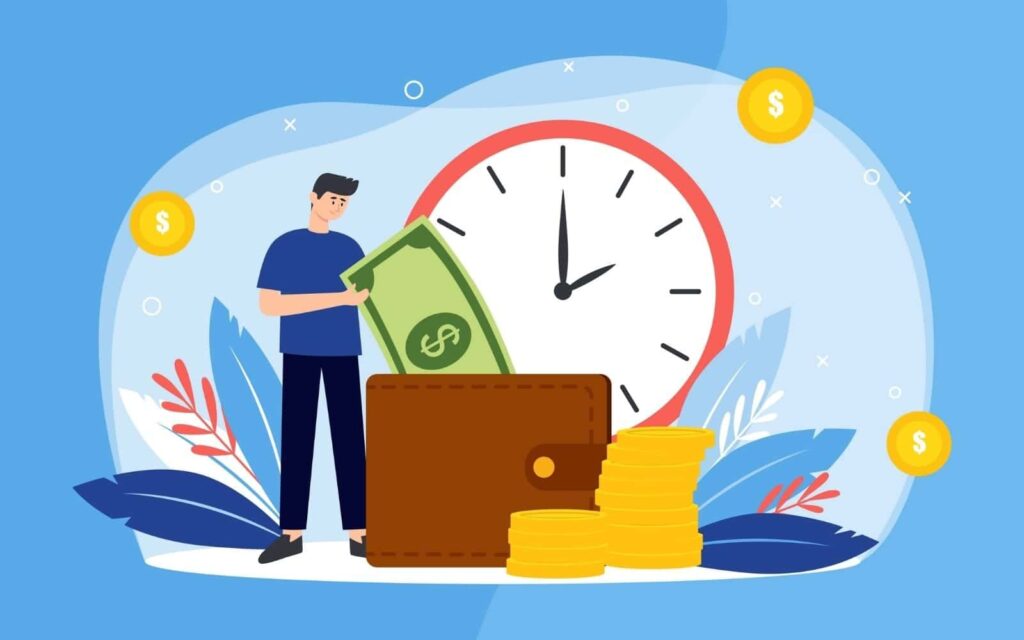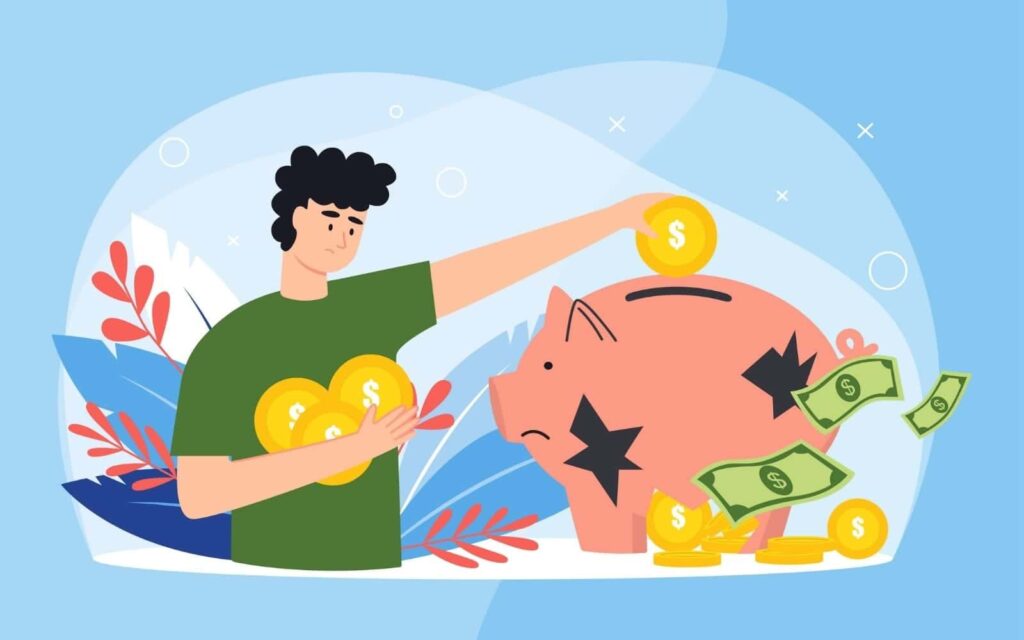Disclosure: This post may contain affiliate links. If you click on a link I may make a small commission at no extra cost to you. You can read the full disclosure here.
Last Updated on February 13, 2024 by Andrej
Embarking on the journey to financial security begins with a crucial step – building an emergency fund.
In this post, you’ll learn about the essentials of starting an emergency fund. Discover the significance of an emergency fund, why it’s indispensable, and how to build an emergency fund that meets your needs.
Whether you’re a financial novice or seeking to fortify your finances, this guide provides invaluable insights to navigate uncertainties and secure a stable financial future. Learn the art of building an emergency fund and empower yourself with the tools to thrive in the face of unexpected challenges.
What Is an Emergency Fund?
An emergency fund is a financial safety net designed to provide a buffer against unexpected expenses, financial emergency, or unforeseen circumstances. It serves as a reserve of cash set aside specifically for emergencies, such as medical expenses, car repairs, or sudden job loss.
The primary purpose of an emergency fund is to offer a sense of financial security and peace of mind, ensuring that individuals or households can navigate through challenging times without resorting to high-interest credit card debt or depleting long-term savings.
Unlike other savings or investment accounts, an emergency fund is highly liquid and easily accessible. The amount to be saved in an emergency fund varies based on individual circumstances, but it typically covers three to six months’ worth of living expenses.
Why Do You Need an Emergency Fund?
An emergency fund is a financial cornerstone, playing a crucial role in your overall financial well-being. Shockingly, recent surveys show that more than half of Americans do not have an emergency fund. Here are some compelling reasons why you need to prioritize and build an emergency fund:
- Unforeseen Expenses: Life is unpredictable, and unexpected expenses can arise at any moment. Whether it’s a sudden medical bill, car repair, or home maintenance, having an emergency fund ensures you can handle these unexpected costs without jeopardizing your financial stability.
- Job Loss: In today’s dynamic job market, employment situations can change unexpectedly. An emergency fund provides a financial buffer if you face job loss, sudden unemployment, or a temporary reduction in income. It offers peace of mind during periods of financial uncertainty.
- Avoiding High-Interest Debt: Without an emergency savings fund, individuals may resort to using a credit card or loan to cover unforeseen expenses. This can lead to accumulating high-interest debt, creating a financial burden that may take a long time to repay. Plus, you may end up with a bad credit rating. An emergency fund helps you avoid falling into this debt trap.
- Maintaining Financial Independence: Relying on external sources for financial support during emergencies can compromise your independence. An emergency fund empowers you to handle unexpected situations on your terms, reducing reliance on friends, family, or credit institutions.
- Protecting Long-Term Investments: Liquidating long-term investments, such as retirement accounts or stocks, to cover immediate expenses can have detrimental effects on your financial future. An emergency fund allows you to preserve your long-term investments and continue benefiting from their growth over time.
- Reducing Stress and Anxiety: Financial stress is a significant contributor to overall stress and anxiety levels. Knowing that you have a financial safety net in the form of an emergency fund provides a sense of security and reduces the emotional toll that financial uncertainties can take.
- Seizing Opportunities: Having an emergency fund not only shields you from an unforeseen expense but also positions you to seize opportunities. Whether it’s pursuing further education, starting a small business, or making a strategic investment, an emergency fund provides the flexibility to explore avenues for personal and financial growth.
Steps to Building an Emergency Fund
Building a robust emergency fund requires strategic planning and disciplined financial habits. Follow these steps to establish and grow your emergency fund effectively.
Create a Saving Habit and Set Your Money Saving Goals
Determine the purpose of your emergency fund. Whether it’s covering three months’ living expenses, addressing specific financial goals, or preparing for unforeseen circumstances, having clear objectives will guide your emergency savings plan.
Cultivate a saving habit by setting aside a fixed amount regularly. Treat your emergency fund contribution as a non-negotiable monthly expense, just like rent or utilities.
Look for a Suitable Account
Opt for an emergency savings account that offers liquidity, allowing you to access funds quickly without penalties or delays. Consider accounts with competitive interest rates to maximize your savings over time.
Check with your bank or credit union if they offer a money market account. These types of accounts can be ideal for building an emergency fund. If you need help, consult an independent financial advisor to get the best account for your needs.
Keep your emergency fund in a separate account to avoid accidental spending. This separation helps maintain clarity regarding your emergency fund’s balance and purpose.
Keep Making Regular Contributions
Establish achievable monthly or bi-weekly savings targets based on your income and expenses. Starting small is fine; consistency is more critical in the early stages.
As your financial situation improves, aim to increase your contributions. Bonuses, tax refunds, or salary raises can be redirected to boost your emergency fund.
Automate Your Savings
Simplify the saving process by automating transfers from your main checking account to your emergency fund. Automating ensures that you consistently contribute to your fund, even when life gets busy.
Schedule automatic transfers to coincide with your payday. This way, you prioritize saving before discretionary spending, making it a seamless part of your financial routine.
Keep Your Monthly Spending Habits Healthy
Adopt responsible spending habits by distinguishing between needs and wants. Cut back on non-essential expenses to allocate more funds to your emergency fund.
Resist the temptation to dip into your emergency fund for non-urgent expenses. Maintaining discipline ensures your fund is available when genuinely needed.
Monitor Your Progress
Periodically review your emergency fund’s balance and compare it against your savings goal. Adjust your contributions if needed, considering changes in income, expenses, or financial goals.
Acknowledge and celebrate milestones along the way. Whether it’s reaching a specific savings target or consistently contributing for a set period, recognizing achievements motivates continued financial discipline.
Building an Emergency Funds FAQs
Here are some of the top building an emergency fund FAQs.
How Much Money Do You Need To Build an Emergency Fund?
The amount of money needed to build an emergency fund varies from person to person based on individual circumstances. However, a common recommendation is to aim for three to six months’ worth of living expenses.
Remember that the goal of an emergency fund is to cover necessary expenses during unexpected situations, providing a financial safety net. It’s a personal decision, and the key is to tailor the size of your emergency fund to your unique circumstances and your financial goal. As your life situation changes, periodically reassess and adjust the size of your emergency fund accordingly.
What Is the 50 30 20 Rule?
The 50/30/20 rule is a popular and simple budgeting guideline that helps individuals allocate their income into three broad categories: 50% for needs, 30% for wants, and 20% for savings. This rule is designed to provide a straightforward framework for managing finances and achieving a balanced financial life.
The 50/30/20 rule is a guideline and can be adjusted based on individual circumstances. It offers a simplified approach to budgeting, emphasizing the importance of balancing immediate needs, personal desires, and long-term financial goals. While it may not fit every situation perfectly, it provides a starting point for individuals looking to establish a budget and achieve financial stability.
How Much Money Should I Save a Month?
The amount of extra money you should save each month depends on various factors, including your financial goals, expenses, income, and individual circumstances.
Ultimately, the key is to strike a balance between meeting your immediate financial needs, saving for short-term goals, and planning for the future. Regularly review and adjust your savings goals as your financial situation evolves, and seek guidance from financial professionals if needed. Remember, the most important aspect is establishing a savings habit and consistently working towards your financial objectives.
Which Factor Is Important To Consider When Building an Emergency Fund?
Several factors are crucial to consider when building an emergency fund. The amount needed for an emergency fund is influenced by your monthly living expenses, job stability, health insurance coverage, family situation, existing debt levels, and personal risk tolerance.
Regularly reassess your emergency fund needs as your life circumstances change to ensure it remains an effective financial safety net.
By building your emergency fund, you’ve laid the foundation for financial resilience. This intentional step ensures security in the face of life’s uncertainties. By heeding the call to save, you’ve fortified yourself against unexpected financial issues and granted peace of mind.
As you watch your fund grow, remember – financial stability is a journey, not a destination. Continue to adapt, save diligently, and celebrate your financial victories. Your robust emergency fund is more than a safety net; it’s a testament to your commitment to a secure and thriving financial future.







